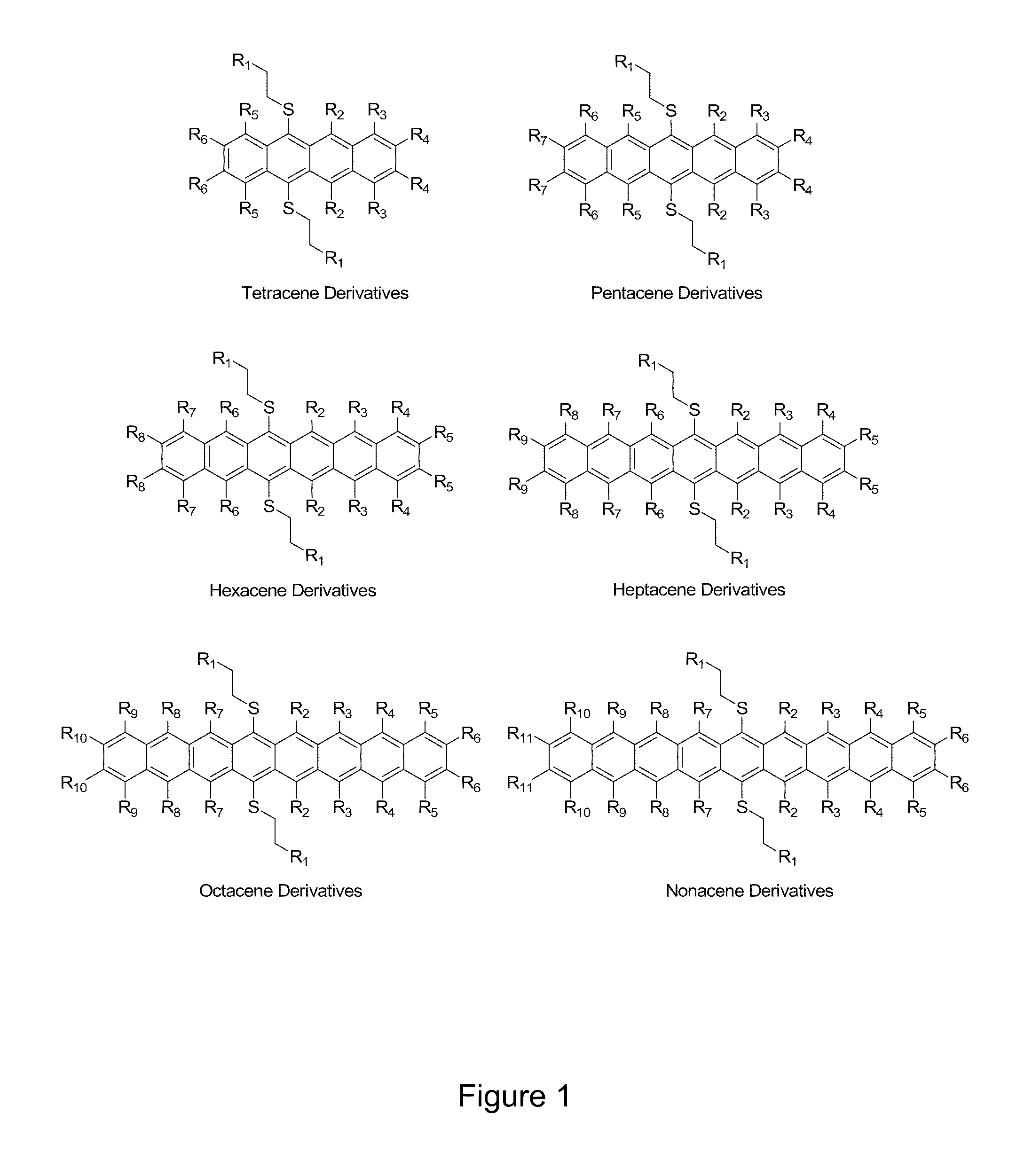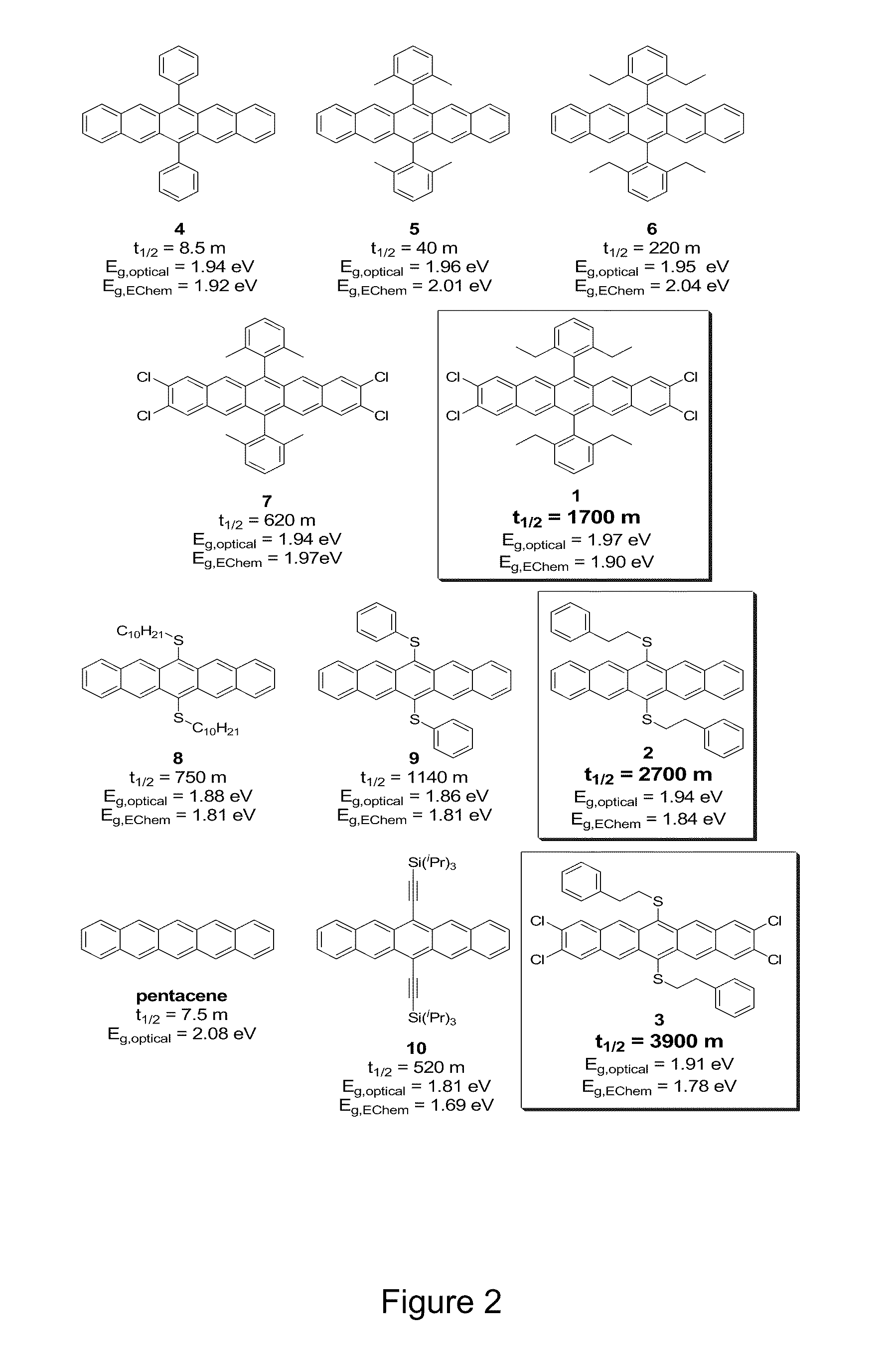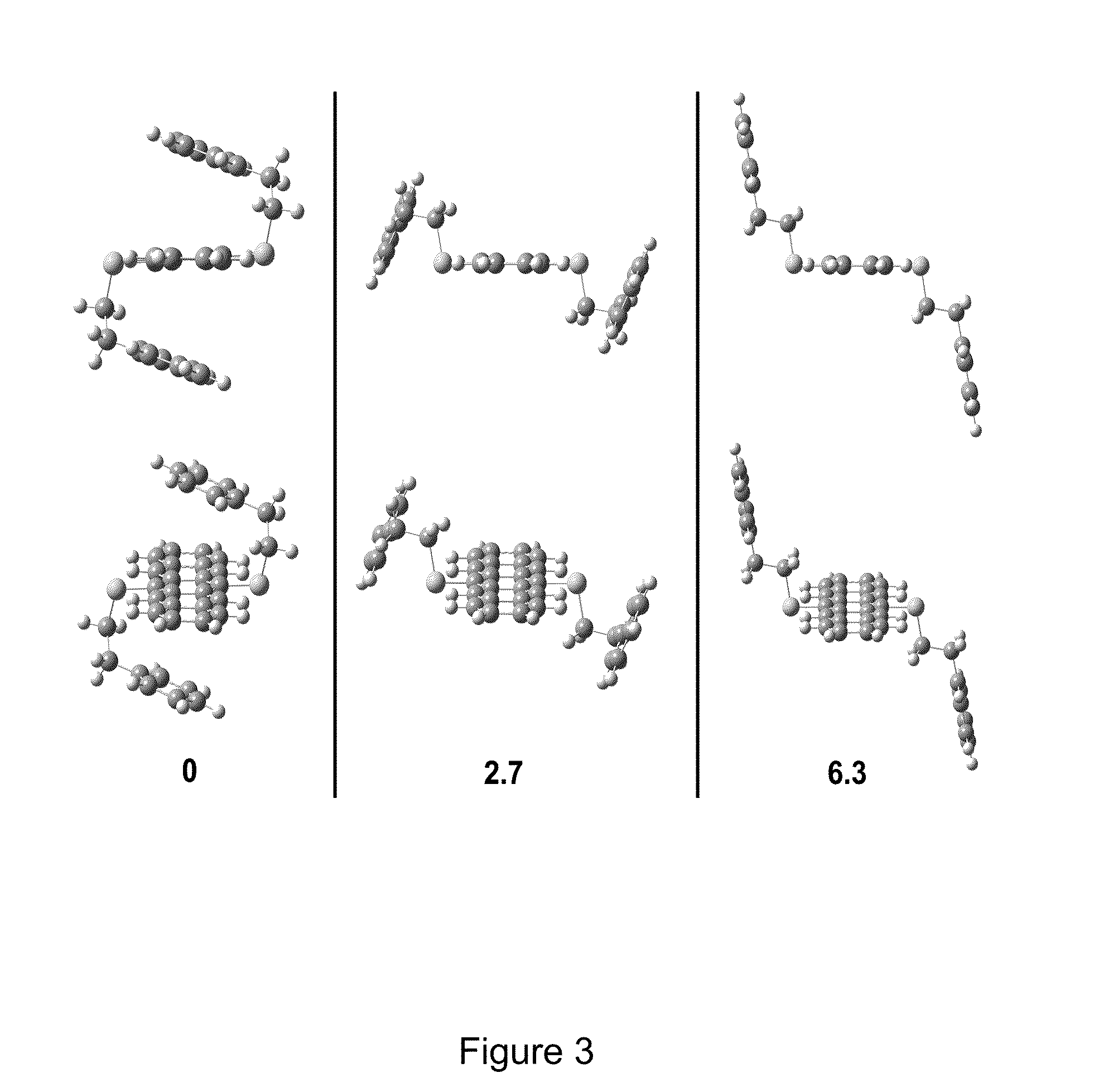Class of soluble, photooxidatively resistant acene derivatives
a technology of acene derivatives and acene, which is applied in the field of soluble, photooxidatively resistant acene derivatives, can solve the problems of poor solubility, propensity to photo-oxidize, and hinder the application of thin-film electronic devices, and achieve the effect of improving electronic characteristics considerably
- Summary
- Abstract
- Description
- Claims
- Application Information
AI Technical Summary
Benefits of technology
Problems solved by technology
Method used
Image
Examples
Embodiment Construction
Compounds of the Present Invention
[0017]The compounds of the present invention relate to novel and non-obvious acene derivatives. Acenes or large acenes or oligoacenes or polyacenes are a class of organic compounds and polycyclic aromatic hydrocarbons made up of linearly fused benzene rings. Pentacene contains five linearly fused benzene rings. Although the structure of pentacene resembles that of other aromatic compounds like anthracene, its aromatic properties are poorly defined by those of skill in the art and; as such, pentacene and its derivatives are the subject of much research.
[0018]The compounds of the present invention are acene derivatives bearing functional groups. FIG. 1 shows a schematic of the generic compounds of the present invention where R1 is selected from, without limitation, carbonyl moieties, alkene moieties, alkyne moieties, diene moieties and aromatic moieties of all types. R2 through R11 represent any group chosen from the following list: hydrogen, alkyl (e...
PUM
| Property | Measurement | Unit |
|---|---|---|
| hole mobility | aaaaa | aaaaa |
| thickness | aaaaa | aaaaa |
| thickness | aaaaa | aaaaa |
Abstract
Description
Claims
Application Information
 Login to View More
Login to View More - R&D
- Intellectual Property
- Life Sciences
- Materials
- Tech Scout
- Unparalleled Data Quality
- Higher Quality Content
- 60% Fewer Hallucinations
Browse by: Latest US Patents, China's latest patents, Technical Efficacy Thesaurus, Application Domain, Technology Topic, Popular Technical Reports.
© 2025 PatSnap. All rights reserved.Legal|Privacy policy|Modern Slavery Act Transparency Statement|Sitemap|About US| Contact US: help@patsnap.com



